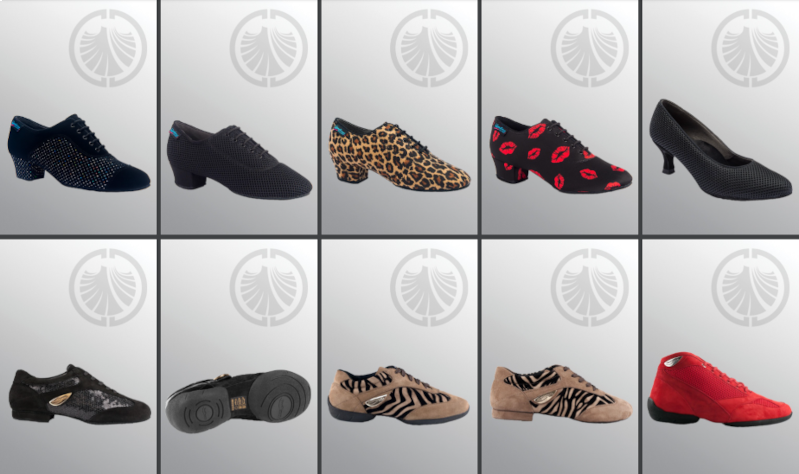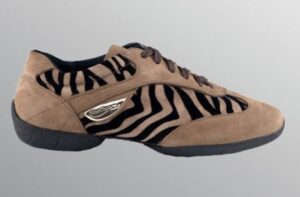BALLROOM DANCE PRACTICE SHOES
What’s the difference and what should I buy?
One of the most frequent questions I’m asked by my students is about dance shoes. There are so many different types, and they’re so different from everyday street shoes.
It’s like a whole new world!

Today, we’re going to explore this new world with a focus on practice shoes.
What is a practice shoe, anyway?
Simply put, a practice shoe can be any type of ballroom shoe that you wear to your lessons or practice. However, some shoes are easier to dance in for long periods of time.
For ladies, a practice shoe is often a laced shoe with a shorter Cuban heel. This type of shoe is so comfortable that it can be worn for hours a day -- plus, they can be used for all styles of ballroom dance! That’s why you might see your instructor wearing practice shoes. My personal favorites are these. (There’s no such thing as too much bling!)
For men, practice shoes are often just competition shoes. However, shoes made of softer leather or canvas provide a comfortable alternative to shiny patent leather shoes. Why? Patent shoes tend to be stiff and can be a little less comfortable than the softer alternatives.
Dance sneakers.
(Wait, there are dance sneakers?!?) Dance sneakers are the casual shoes that have the flexibility and softness of practice shoes. I like to keep a pair on hand for the days I have tired feet -- or perhaps a weekend Salsa lesson! However, it’s important to note that dance sneakers can’t replace practice shoes completely, since practice shoes allow you to point your toe and also redistribute your weight to help you dance.
Warning!
When purchasing a practice shoe, it is important you shop at a ballroom store, not a ballet store. Often, dancers will accidentally buy a character shoe; after all, they look pretty similar to ballroom shoes! Ballroom shoes and character shoes are actually pretty different, though. Ballroom shoes are more flexible, which allow you to point your toes (a must-have for ballroom). Also, the soles of ballroom shoes are suede, which makes it easier for you to control your turns when you dance, while the soles of character shoes are leather.
Remember: form = function! All types of shoes are made with a dance in mind -- just make sure it’s your dance.

Buying shoes.
The most important thing about buying ballroom shoes is trying them on. This means either visiting a booth at a trade show (read: competition), or, as I prefer to do, visit a showroom. Personally, I buy my shoes at Dress for Dance and encourage my students to do so as well. The salesperson is well-versed in shoes and knows that there’s more to finding the perfect fit than just size. (Did you know that some companies always run a little wide while others make shoes that are always a little narrow?) A good shoe vendor will know how to work with any type of food -- or, as is most important for you, your foot.
Pro tip: I recommend that my students who are first-time shoe shoppers give me a call and show me their shoes when buying them. We instructors know ballroom shoes very well. They’re like a second skin to us, and they will be your second skin when you’re dancing -- and you have to be comfortable in your own skin, no? We can tell how your shoes will treat you just by looking at how you stand in your shoes and we can give you all the deets on how the shoes will fare over the next few months.
All-in-all, having a practice shoe will allow you to train with ease and dance in comfort.
Happy Dancing!
Christine Kjellquist, Pro




1 Comment